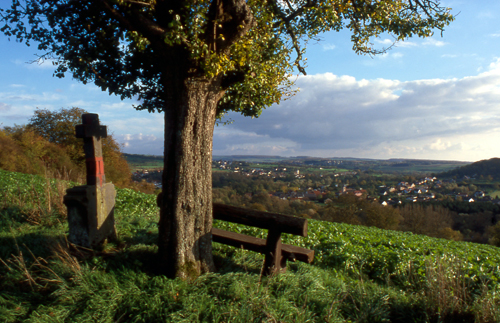Biosphaere Bliesgau/en: Unterschied zwischen den Versionen
Tschug (Diskussion | Beiträge) |
Tschug (Diskussion | Beiträge) |
||
| Zeile 14: | Zeile 14: | ||
<p>Each UNESCO biosphere reserve is subdivided into three zones. The core area is for ‘leaving Nature to its own devices’. The primary aim of the buffer zone is for the maintenance, upkeep and element of ecosystems, whose creation and species diversity stems from their use by humans, and whose continued existence can be assured only by active human management. All areas outside the core and buffer zones form part of the development zone.</p> |
<p>Each UNESCO biosphere reserve is subdivided into three zones. The core area is for ‘leaving Nature to its own devices’. The primary aim of the buffer zone is for the maintenance, upkeep and element of ecosystems, whose creation and species diversity stems from their use by humans, and whose continued existence can be assured only by active human management. All areas outside the core and buffer zones form part of the development zone.</p> |
||
| − | <p> |
+ | <p>The digital map provides you with information about the location of the zones in the UNESCO Biosphere Reserve Bliesgau.</p> |
<p>'''Biosphärenreservat Bliesgau'''<br /> |
<p>'''Biosphärenreservat Bliesgau'''<br /> |
||
Version vom 18. März 2022, 13:13 Uhr
Zoning for Biosphere Bliesgau
(Status of ‘Ordinance on the Bliesgau Biosphere Reserve’ as of 24 June 2020)
Viewer
Go to application: ‘Biosphere Bliesgau’
Description
UNESCO biosphere reserves are model regions for sustainable development. The conservation of biodiversity, the promotion of low-impact tourism and innovative, eco-friendly production methods, as well as the development and marketing of regional products, are all part of the activities that are carried out in biosphere reserves. These reserves offer a unique opportunity for small-scale pilots of new perspectives on sustainable regional development.
Each UNESCO biosphere reserve is subdivided into three zones. The core area is for ‘leaving Nature to its own devices’. The primary aim of the buffer zone is for the maintenance, upkeep and element of ecosystems, whose creation and species diversity stems from their use by humans, and whose continued existence can be assured only by active human management. All areas outside the core and buffer zones form part of the development zone.
The digital map provides you with information about the location of the zones in the UNESCO Biosphere Reserve Bliesgau.
Biosphärenreservat Bliesgau
Das UNESCO-Biosphärenreservat Bliesgau ist die saarländische Modellregion für nachhaltige Entwicklung. Auf rund 36.100 Hektar wechseln ausgedehnte Streuobstwiesen, kleine schmucke Dörfer, wertvolle Buchenwälder, artenreiche Trockenrasen und eine naturnahe Auenlandschaft der Blies einander ab. Der Bliesgau ist Deutschlands Orchideenland, aber auch Heimat und saarländischer Verbreitungsschwerpunkt des vom Aussterben bedrohten Steinkauzes. Für einige Arten, wie den Goldenen Skabiosenscheckenfalter, trägt der Bliesgau eine europaweite Verantwortung.
Das Biosphärenreservat ist aber auch eine Region im Wandel, die seit langer Zeit durch eine traditionell bäuerliche und extensive Landwirtschaft geprägt ist, aber in den Städten Homburg und St. Ingbert auch hochmoderne Industriebetriebe vorweist.
Die besondere Stadt-Land- Beziehung ist das Alleinstellungsmerkmal des UNESCO-Biosphärenreservates Bliesgau. Die regionale Vermarktung eigener landwirtschaftlicher Produkte sind ebenso Projekte wie Aufbau und Festigung regionaler Initiativen, Aufbau eines Partnerbetriebe-Netzwerks, nachhaltiger Tourismus, Klimaschutz-Initiativen und Bildung für Nachhaltige Entwicklung.
Downloads
Ansprechpartner
Ministerium für Umwelt und Verbraucherschutz
Referat D/3 "Landschaft, Fischerei und Umweltbildung"
Dr. Volker Wild
E-Mail-Kontakt
Telefon: +49 681 501-4747
